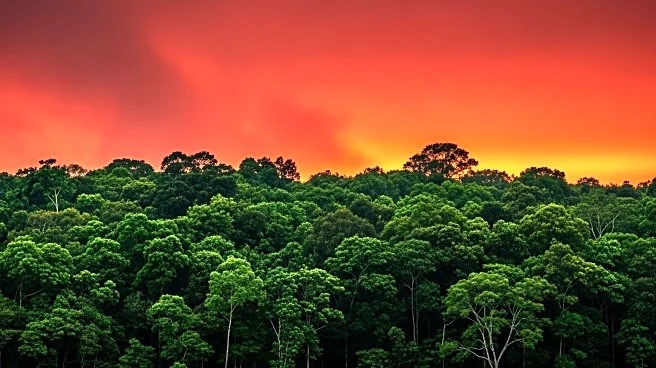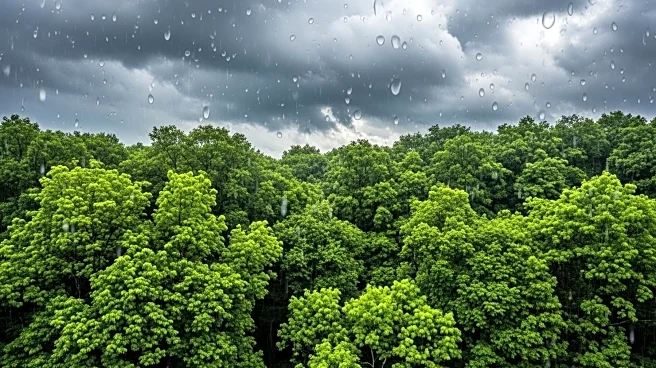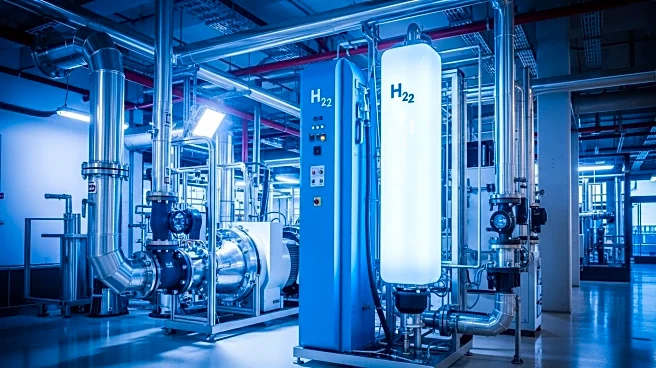What's Happening?
A study by the European Commission's Joint Research Centre reveals that the Amazon rainforest experienced its most severe fire season in over two decades in 2024. The fires released approximately 791 million tons of carbon dioxide, equivalent to Germany's annual emissions. The surge in fire activity is attributed to extreme drought stress, climate change, forest fragmentation, and land-use mismanagement. This marks a shift where fire-induced degradation has overtaken deforestation as the primary driver of carbon emissions in the Amazon.
Why It's Important?
The record-breaking carbon emissions from the Amazon fires highlight the urgent need for coordinated global action to address forest degradation. The fires not only contribute to climate change but also threaten biodiversity and the ecological integrity of the region. The study calls for enhanced forest protection policies and international climate finance mechanisms to support local and Indigenous stewardship efforts, emphasizing the importance of addressing fire-driven degradation alongside deforestation.
What's Next?
The study suggests immediate action to reduce fire use and strengthen forest protection policies. It emphasizes the need for international collaboration to support local and Indigenous efforts in forest conservation. Enhanced climate finance mechanisms are necessary to address forest degradation, not just deforestation, ensuring comprehensive strategies to mitigate the impact of fires on the Amazon's carbon emissions.











